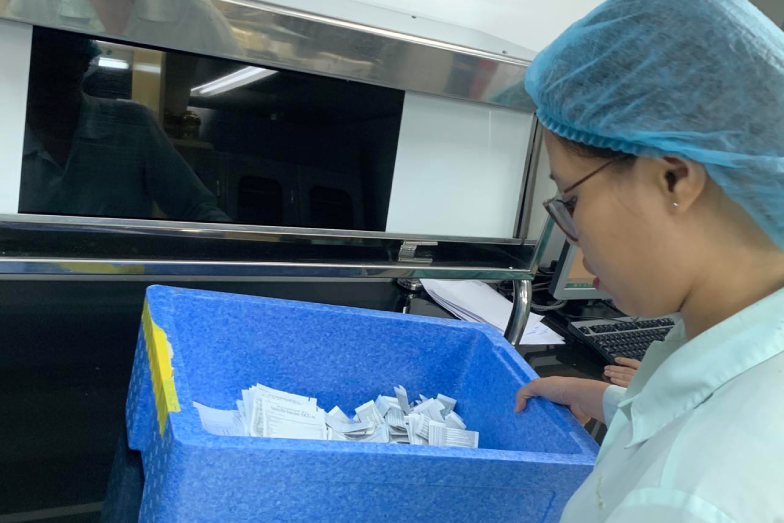
Ta Manh Hung, deputy director of the Drug Administration of Vietnam (DAV), an arm of the Ministry of Health (MOH), said the 2016 Law on Pharmacy has a separate chapter about the development of the pharmacy industry and domestic drugs, including rare drugs, drugs for dangerous diseases, and hi-tech drugs.
Hung said that the policies to develop the pharmacy industry are sufficient and ready. Vietnam has released Resolution 29 on new approaches in the medicine and pharmaceutical industry. However, it is still difficult to attract investment and develop the industry.
Previously, Vietnam had only state-owned drug companies, but the companies have been equitized and the number of factories has been increasing rapidly. The number of foreign invested manufacturers remains modest, making mostly generics, but Vietnam still doesn’t have brandname drugs.
As for vaccine, according to Hung, Vietnam now can produce 11 out of 12 vaccines used in the national expansion program, but some technologies used are old. Some new vaccine technologies have been applied, but the number of such technologies remains modest. The investment rate for development of domestic companies is still low.
Hung said that Vietnam pays high attention to preparing human resources for the pharmaceutical industry, but still cannot attract highly-qualified pharmacists to help develop the domestic pharmaceutical industry.
High costs, risks
Prof Dr Nguyen Thai Nam, Rector of the Hanoi University of Pharmacy, said that in order to develop the pharmacy sector, Vietnam needs both a strong workforce and economic capability.
Of these, human resources play the decisive role in the development of the field.
According to Nam, there are 41 training establishments which produce workers for the pharmacy industry, with 37,000 students studying. In 2023, about 6,800 pharmacists will graduate from school, which is much higher than 10 years ago. Of this, about 1,000 pharmacists will join the field to research and produce drugs.
In addition, there are bachelor’s degree holders majoring in pharmaceutical chemistry (each of the 13 training establishments produces 60-100 graduates a year). Vietnam can also seek staff from Vietnamese with bachelor’s degree from overseas.
In general, if all institutional problems and business questions can be solved, the pharmaceutical industry in Vietnam will develop.
There are 342 pharmacy companies in Vietnam which are developing strongly. Many of have annual revenue of up to VND5 trillion.
However, the revenue is small compared with foreign pharmaceutical companies. They still cannot approach studies on new drugs and brandname drugs.
Nam attributed this to the high risks and expenses when investing in research and production of a new type of drug. Meanwhile, Vietnam still doesn’t have programs to fund projects on developing hi-tech drugs.
In order to encourage firms to invest in hi-tech pharmaceutical firms, Nam believes that the state should offer tax incentives to firms accepting venture investment. The products should be allowed to enjoy tax exemption for four years and a 50 percent tax cut in the next nine years.
As for the Ministry of Health, the ministry needs a list of hi-tech drugs and a bidding mechanism different the current one. Only by doing this will the ministry be able to encourage companies to conduct research and development (R&D).
He also emphasized the need to carry out administrative reform, saying that many foreign pharmaceutical firms are hesitant to enter Vietnam because of complex procedures that too much time.
Deputy director of the Foreign Investment Agency (FIA) under the Ministry of Planning and Investment (MPI) Do Van Su noted that the foreign direct investment (FDI) poured into the field of pharmacy and medicine remains low. This is an industry that changes more slowly than others.
Previously, the sector was 100 percent controlled by the state, and private investors only began joining the sector when the state equitized the enterprises. The equitized enterprises run by people with outdated ways of thinking based on older production processes cannot innovate rapidly.
Phuong Thuy